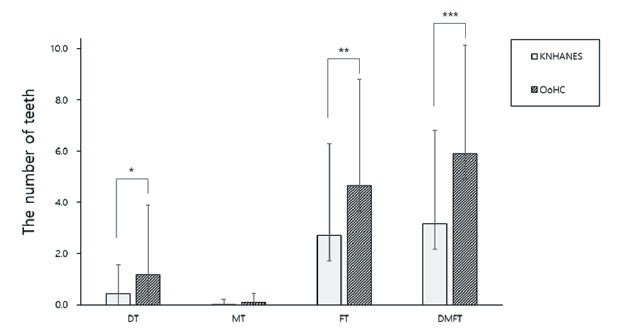Abstract
This study aimed to compare the dental caries and periodontal health status of adolescents and young adults living in out-of-home care (OoHC) in Incheon city with the data of those surveyed in the 7th Korean National Health and Nutrition Examination Survey (KNHANES).
Oral examination was performed on 71 OoHC adolescents (aged 13-26 years) in Incheon city and among the raw data of the 7th KNHANES, 114 adolescents were selected as a control group. The DMFT index and the presence of calculus of all subjects was calculated. An independent sample t-test and chi-square analysis were performed to determine the differences between the two groups. The DMFT indices of OoHC and control group were 5.90±4.23 and 3.17±3.65, respectively, showing a statistically significant difference (
Figures & Tables

Fig. 1. Comparing the dental caries status (DMFT) between KNHANES data and OoHC data in Incheon city.
